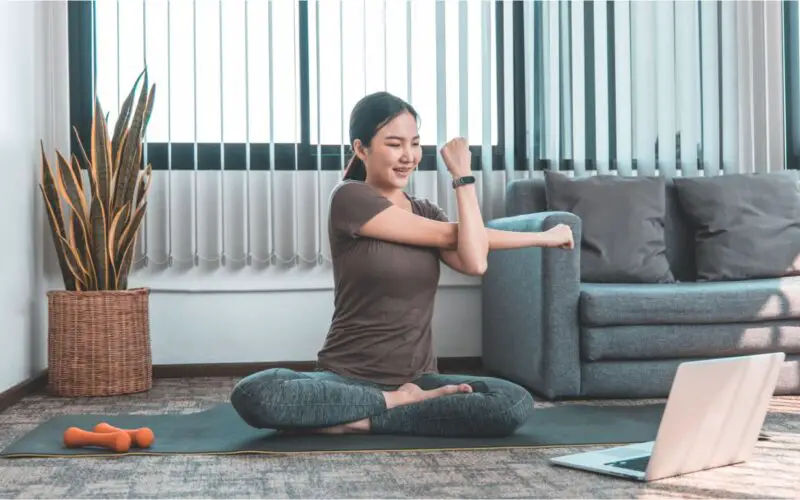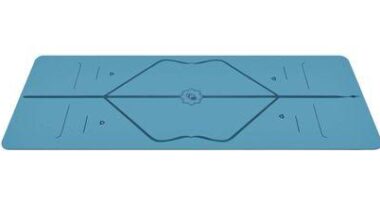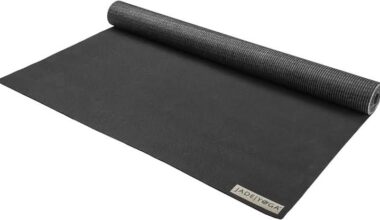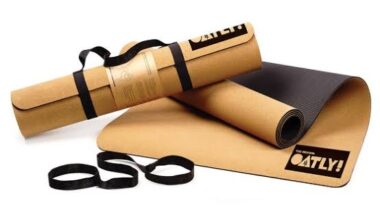If you’re a yoga enthusiast or a beginner looking to invest in a new yoga mat, the first question that comes to mind is, “How much does a yoga mat cost?” The answer is not straightforward, as there is a wide range of yoga mats available on the market, each with its own set of features and price points. In this comprehensive guide, we will explore the different types of yoga mats and their associated costs, helping you find the perfect mat for your practice and budget.
Types of Yoga Mats
- Basic Yoga Mats – These are the most affordable yoga mats, and they are perfect for beginners or those who practice yoga occasionally. Basic yoga mats are usually made of PVC and are around 1/8 inch thick. They typically cost between $10 to $20.
- Thick Yoga Mats – If you’re looking for a yoga mat with extra cushioning and support, then a thick yoga mat may be the right choice for you. Thick yoga mats can range from 1/4 to 1/2 inch in thickness, and they usually cost between $20 to $50.
- Eco-Friendly Yoga Mats – If you’re concerned about the environment, then an eco-friendly yoga mat may be the perfect choice for you. These mats are made from natural materials such as cork, jute, or rubber, and they typically cost between $30 to $100.
- Travel Yoga Mats – If you’re always on the go and need a yoga mat that is easy to carry, then a travel yoga mat is a perfect choice. These mats are usually thinner than standard yoga mats and are designed to be lightweight and easy to fold. They typically cost between $20 to $50.
- Premium Yoga Mats – Premium yoga mats are designed for serious yoga enthusiasts who demand the best. These mats are made of high-quality materials, such as natural rubber or microfiber, and they typically cost between $80 to $150.
There are many different types of yoga mats available, each designed for specific types of yoga and individual needs. Here are some of the most popular types of yoga mats and their associated costs:
Disclosure: As an Amazon Associate I earn from qualifying purchases.
Factors Affecting the Cost of Yoga Mats
The cost of a yoga mat can vary based on several factors, including the materials used, the thickness of the mat, the size of the mat, and the brand. Here are some of the factors that can affect the cost of a yoga mat:
- Material – The type of material used to make the yoga mat can affect its cost. Basic yoga mats made of PVC are the least expensive, while eco-friendly mats made of natural materials such as cork or jute are more expensive.
- Thickness – The thickness of the yoga mat can also affect its cost. Thicker mats with more cushioning are typically more expensive than thinner mats.
- Size – The size of the yoga mat can also affect its cost. Larger mats are usually more expensive than smaller mats.
- Brand – The brand of the yoga mat can also affect its cost. Premium brands with high-quality materials and advanced features are typically more expensive than lower-end brands.
How to Choose the Right Yoga Mat for You
1. Consider Your Yoga Style – Your yoga style plays a significant role in choosing the right yoga mat. If you practice a dynamic and fast-paced style like Ashtanga or Vinyasa, you’ll need a mat that offers good traction and grip. On the other hand, if you practice a slower and gentler style like Yin or Restorative, you may prefer a mat that offers more cushioning and support.
2. Thickness and Size – The thickness and size of your yoga mat are crucial factors to consider. A standard yoga mat is usually 68 inches long and 24 inches wide, but you can also find larger and smaller sizes to suit your needs. The thickness of your mat determines how much cushioning and support it provides. Thicker mats offer more cushioning but may be heavier and more challenging to transport.
3. Texture – The texture of your yoga mat determines how much grip and traction it provides. A mat with a rougher texture offers more grip and is perfect for those who sweat a lot. A smoother mat may be more comfortable, but it may not offer as much grip.
4. Eco-friendliness – If you’re environmentally conscious, you may prefer an eco-friendly yoga mat. Look for mats made from natural materials like cork, jute, or natural rubber. These mats are biodegradable and do not emit harmful chemicals.
5. Budget – The cost of your yoga mat is another crucial factor to consider. While there are many affordable options available, investing in a high-quality yoga mat can make a significant difference in your practice. A good yoga mat can last for years, so it’s worth spending a little more to get one that suits your needs.
In conclusion, choosing the right yoga mat is a personal choice that depends on your needs and preferences. Consider factors like the type, texture, thickness, size, eco-friendliness, and budget to make an informed decision. A good yoga mat can enhance your practice and help you achieve your yoga goals.
You May Also Like: How Much Does a Yoga Mat Cost? A Comprehensive Guide for All Budgets






Comments are closed.